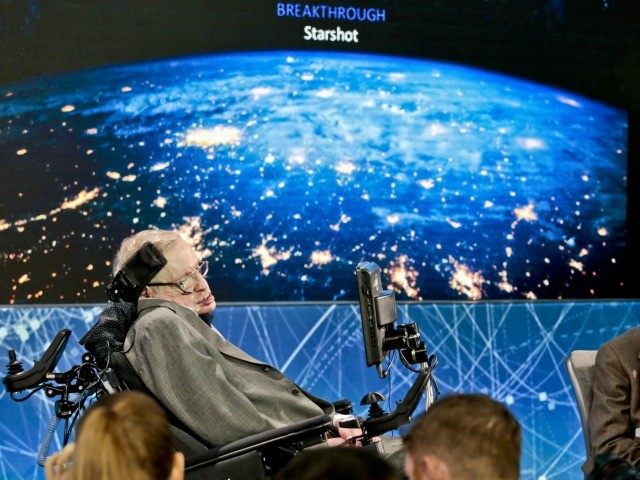Famed cosmologist Stephen Hawking, working with Russian investor Yuri Milner, has proposed a program called “Breakthrough Starshot,” which would boost a fleet of tiny space probes to Alpha Centauri by pouring energy from powerful lasers into their light sails.
Don’t think about purchasing your ticket to Alpha Cenaturi just yet, unless you’re prepared to travel very light. The Breakthrough Starshot probes would be tiny “nanocraft,” little more than a computer chip attached to a sail.
Their miniscule size means the laser platforms could propel them at speeds not currently possible for larger spacecraft — up to 20 percent of the speed of light, which means they would make the 20 year journey across 25 trillion miles to Alpha Centauri in a little over 20 years. That’s quite a bit faster than the 30,000 years that would be required by the most advanced spacecraft currently produced.
“The propulsion system is based on ideas developed as long ago as the early 1970s for a high-speed interstellar transport system,” explains the Financial Times. “The craft would be powered by the pressure of the laser on the sail combined with photon thrusters — engines powered by light that could potentially provide efficient, high-speed movement in space.”
There’s no point in marking your calendar for the first transmissions from Alpha Centauri just yet, because these little probes would require a network of huge lasers to propel them with 100-gigawatt beams. Popular Science estimates that creating the laser array might require 20 or 30 years of work and billions of dollars in capital, which makes Milner’s announced $100 million commitment a mere drop in the bucket.
The organization necessary to launch those nanocraft would rival NASA in “scope, scale, and impact,” as spokespeople for Breakthrough Starshot told Sky News.
Frankly, just about every bit of technology involved in this project is a bit on the… conceptual side, including the tiny probes that would be capable of recording meaningful knowledge and sending it back to Earth, and the light sails that would propel them.
It’s unlikely that any of the people backing the Breakthrough Starshot initiative would live to see it bear scientific fruit, but that hasn’t diminished their enthusiasm for the project. In addition to Hawking and Milner, Popular Science lists “famed physicist Freeman Dyson, astronaut Mae Jemison, science popularizer Ann Druyan, astronomer Avi Loeb, and former NASA Ames director Pete Worden” as part of the all-star panel for the project launch. Financial Times notes Facebook CEO Mark Zuckerberg is on the board.
“For the first time in human history, we can do more than just gaze at the stars. We can actually reach them. It’s time to launch the next great leap in human history,” said Milner. He’s stealing a march there, because we do not, in fact, have the technology to do what he proposes just yet. We’re close, though, and brass rings are never seized without stretching.

COMMENTS
Please let us know if you're having issues with commenting.